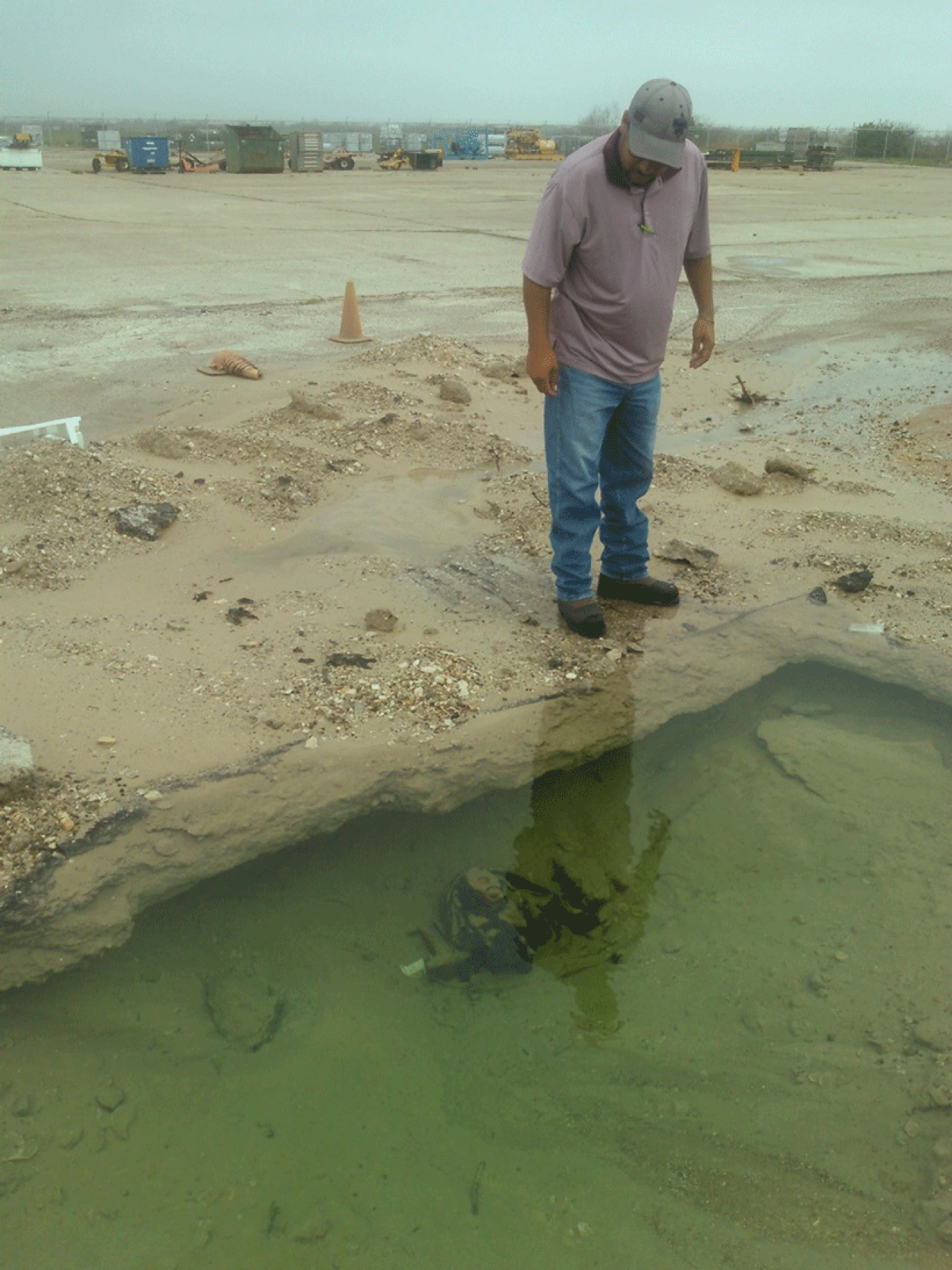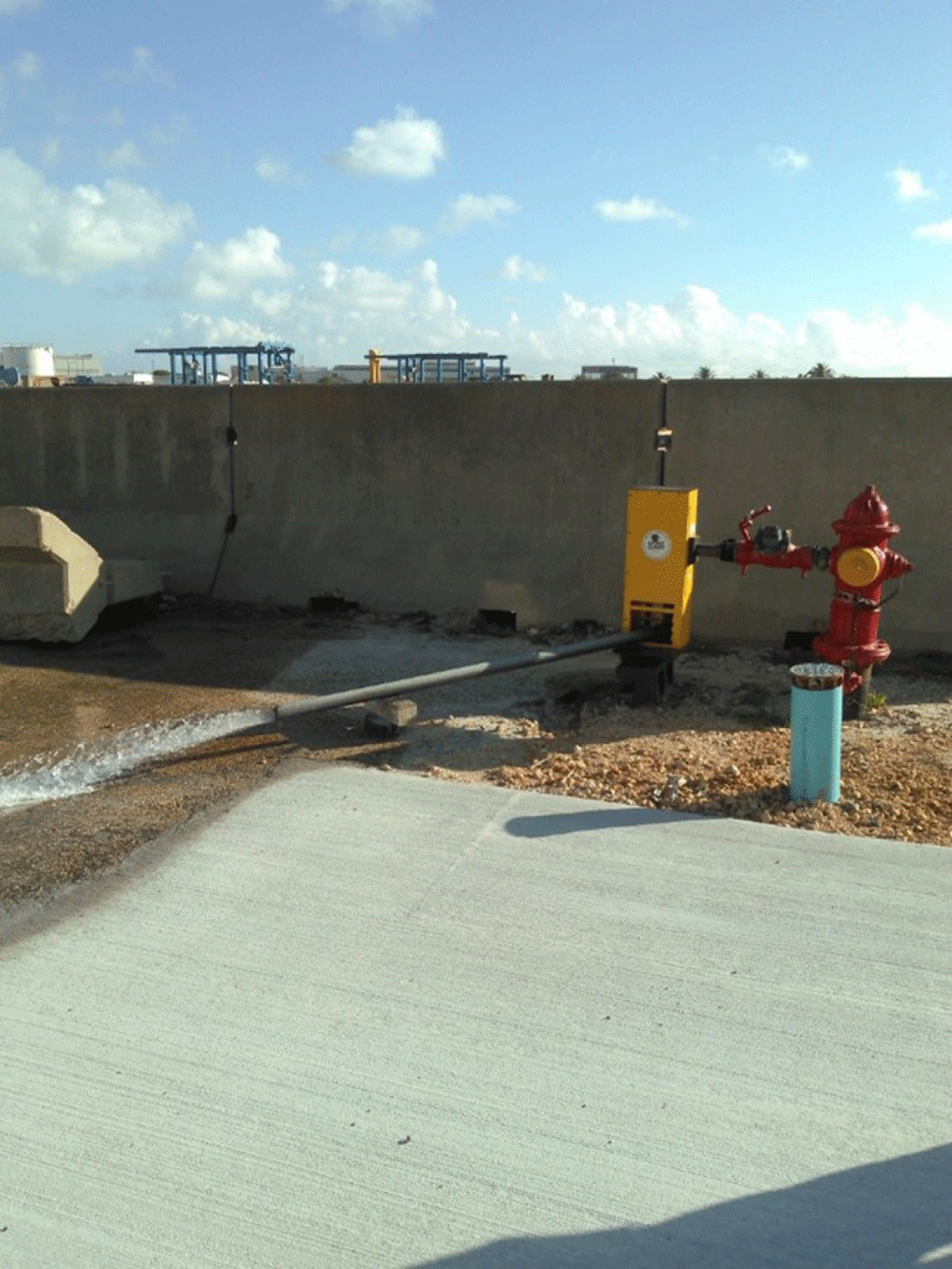
Naval Air Station Corpus Christi.
In 2018, Naval Air Station Corpus Christi (NASCC) faced a significant water management challenge. Built in the 1940s and predisposed to failures, the installation's 230,400-foot water supply and distribution system was leaking, but exactly where was unknown. Between Fiscal Year (FY) 2011 and 2017, it had lost 1.3 billion gallons of water. Without accurate metrics, it was difficult to understand where to attack the leakage problem. To staunch the systemic water loss, NASCC developed, executed, and institutionalized a low-cost, high-return data analytics-based water management program methodology.
Project Details
Tracking Down Millions of Gallons of Missing Water

Prior to implementing its water management program, water main breaks at NASCC contributed to the loss of hundreds of millions of gallons of water each year.
The NASCC team was working with an old installation, and facilities managers noticed that their water usage was excessive, but understanding how excessive it was, and where the leaks were located, required additional investigation.
In 2011, NASCC knew that the installation was using some 400 million gallons of water per year. A metering system installed in 2012 which more accurately measured water flow; however, the meters did not indicate how much water was being used.
Using utility bills and the measured amount of water flowing from the installation out to the surrounding ocean, the team set up a low-cost, high-return data analytics methodology to gauge water volume and leakage. Using the algorithm, NASCC determined that large amounts of water were not accounted for.
To help pinpoint water leaks in the system, NASCC also utilized the U.S. Department of Energy (DOE) Federal Energy Management Program (FEMP) Best Management Practice: Distribution Audits, Leak Detection and Repair. Additionally, the NASCC team institutionalized a water management program methodology as a monthly parameter executed during the periodic utility billing cycle.
Using the algorithm, the team began to identify where NASCC was losing water: near storm drains where water breaks went unnoticed, and through fire hydrants used by NASCC for periodic flushing to maintain water quality in the system.
Results
Millions in Water Savings, Faster Repairs, and Enhanced Coastal Conservation

NASCC used an algorithm to identify water losses due to periodic flushing of fire hydrants.
Prior to the project, NASCC was purchasing 400 million gallons of potable water per year―more than one million gallons of water a day. In contrast, in FY 2018, with the water management program in place, the total annual consumption was only 148 million gallons. Over the next six years, NASCC will save more than 1.3 billion gallons of potable water and $6 million in water cost savings.
In the future, the data analytics water management program methodology will quickly identify water loss, sounding the alarm for field crews to investigate the system for leaks. The program methodology will expedite repairs, improve water quality, reduce water waste, and promote conservation in the coastal bend.
Lessons Learned
Applying Analytics to Other Areas
NASCC is applying the same methodology it used successfully for identifying water loss to identify potential supply line and natural gas leaks.
Responding to Reduced Water Budgets in the Face of Rising Water Costs
Because NASCC water consumption levels dropped by 67%, its water budget shrank. NASCC's water utility rates more than doubled from around $2 to $5 per hundred cubic feet because of needed system improvements. NASCC is exploring other approaches to water conservation to bridge the gap between its new budget and cost.
Communication Is Critical
Project managers stressed the importance of communication in the process of developing the new water management program and algorithm. Listening to energy managers was found to be vital in testing and measuring water use across the diverse buildings and facilities on the 2,844-acre campus.

